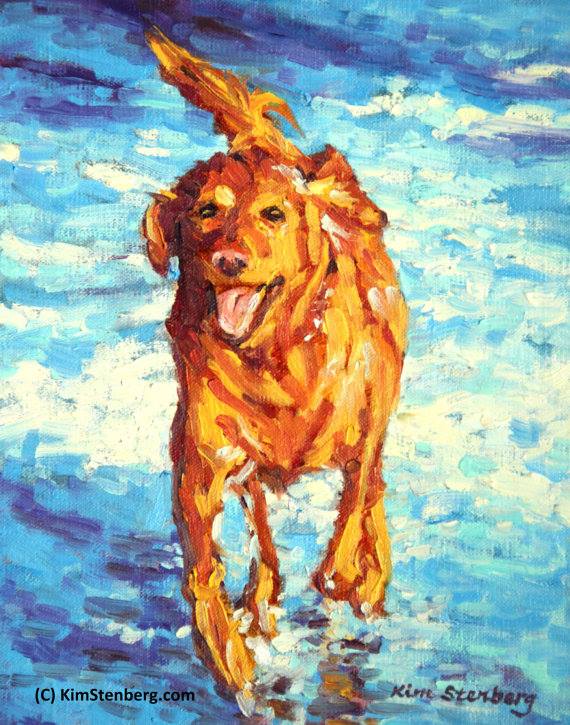
One of the hardest things to learn for a “newbie” in the dog fancy is to evaluate movement, particularly in hairy dogs. In our opinion, it takes time to develop an eye, but once developed, one cannot help but observe movement in all living things, including the person crossing the street in front of your car at a red light.
Viewers watching a dog show on TV may not realize that when a judge is examining a dog, (we’ll say the judge is a man), he is validating with his hands what he saw with his eyes when the dog moved. And when the dog moves, he is conjuring up in his mind the breed standard, and in particular, the sections dealing with movement. Does the exhibit he is observing demonstrate not just soundness, but type?
“Type,” is that quality that makes a Fox Terrier look like a Fox Terrier and not a Malamute, but in the view of many, type can also include movement. The short, stilted gait of the Chow Chow is type. The lively, hovercraft movement of the Puli is type. The amble or pace at slower speeds is type in the Old English Sheepdog.
Dog gaits are split into two categories: Symmetrical where the movements of the sides mirror each other, and asymmetrical where the movements of the sides are not the same. Seasoned dogmen (written to mean all people, not just males) believe there are six different gaits: walk, pace, amble, trot, canter and gallop, and three gallops (the double suspension gallop, the half bound gallop and the glide gallop). Author and judge, Robert Cole, writes that there are also eight trotting styles, and as an example, the Golden Retriever is an endurance trotter. Endurance trotters tend to be a bit longer than tall, and their length of leg is equal to the depth of body. In the moment that the dog changes diagonals, all four feet are off the ground. Cole has written that the best moving dog he has on film is a of Golden Retriever.
Image: Golden Retriever by Kim Stenberg
www.kimstenberg.com
https://www.etsy.com/shop/
www.facebook.com/
kimstenbergart.blogspot.co

Your first paragraph is so true. Years ago my BFF dog friend and I went to see “Cujo.” As the poor St. Bernard trot’d out to be bitten by the bat we look at each other and remarked “nice rear.”
But it is also true that what we see in person versus on TV is not always the same. Again, years ago I attended Westminster. The BIS was an absolutely gorgeous Afghan, what I used to refer to as a “goosebump” dog. So wonderful I got goosebumps! When I got home I was raving about the dog my BFF allowed as how I was nuts. Her father had taped it (Beta – it was that long ago) for her and when I saw the tape the type and presence certainly did not come through. I always remind myself of that when watching on TV (now that I am old and retired).
Benita, your comment makes us laugh! “Nice rear” is so like something “dog people” would say…